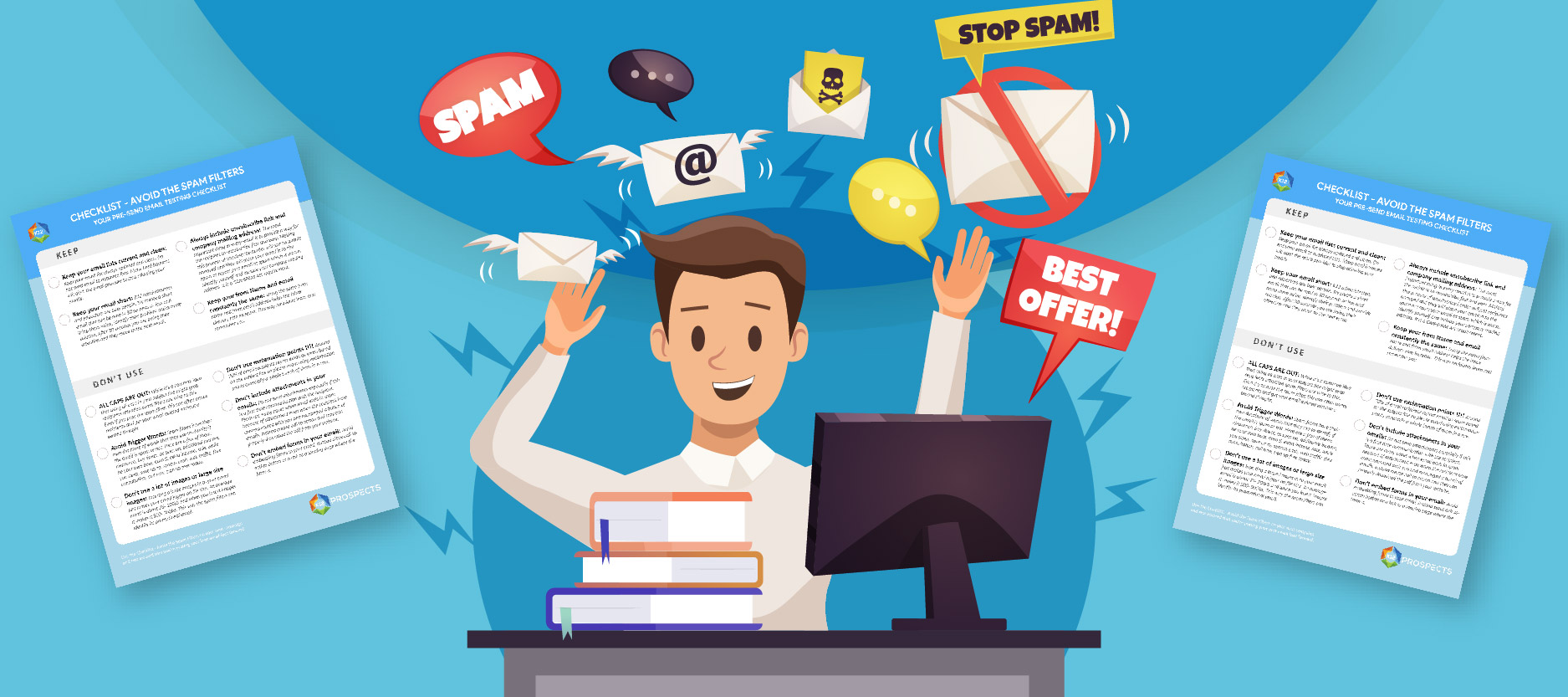[ CHECKLIST ] How to Avoid School Email Spam Filters

What are Spam Filters and how they Work Against you
Spam filters are the guardians to the fortress that is your client’s inbox. In order to protect institutions and their employees from spam and harmful phishing attacks, they analyze incoming emails and decide which will reach the inbox and which won’t. This process can land your emails in the spam folder or reject them completely, erasing them without a trace.
In the past, spam filters were very simple. They analyzed the content of the email and determined if it would pass or not based on the words found. Phrases like free weight loss, buy now and double your income were triggers for spam filters.
However, times have changed. These days spam filters are very advanced and the major email providers like Gmail, and Outlook have very sophisticated methods of looking at your previous interactions with the recipients.
Good Signals
The following are considered positive factors. Most major email providers track this data for outgoing emails. Racking up good points will help your campaigns overall.
Open – If the recipient frequently opens your campaigns.
Reply – If the recipient actually responds to your emails.
Not Junk – If the recipient moves your email out of the junk folder to the inbox. *This is a particularly strong signal which will boost your reputation greatly*
Bad Signals
The following are considered negative factors. Most major email providers use these signals to track spammers and relegate them to the no-fly zone.
Move to Junk – If the recipient moves your email from the inbox to junk. *This will impact your campaign negatively*
Delete without Open – If the recipient deletes your campaign simply based on the subject line and sender information.
Stop Repeated Bounce Backs
Hard bounces are the result of invalid or non-existent emails. Bounce rates are an important factor to email providers like Gmail and Outlook to determine your reputation. After so many hard bounces, the email provider will stop allowing your emails. For this reason, it is incredibly important to constantly update your list with the newest contact information. School personnel changes frequently and sometimes they change their email addresses while in the same position.
ALL CAPS ARE OUT
While it’s a common idea that using all caps in your subject line might grab recipients attention, spam filters are wise to this. Even if you pass the spam filter, this can often annoy recipients and get your email deleted without a second thought.
Avoid Trigger Words
Spam filters have their own database of words that they use to identify whether or not the email qualifies as spam. Here are a few examples: clearance, buy direct, as seen on, additional income, be your own boss, earn $, extra income, sale, while you sleep, save up to, serious cash, web traffic, free consultation, call now, sign up free today.
Don’t use exclamation points !!!!
Around 70% of email recipients report email as spam based on the subject line so please avoid using exclamation points, especially several in a row.
Don’t embed forms in your email
Avoid embedding forms in your email. Instead place a call-to-action button or a link to a landing page where the form is located.
Don’t include attachments in your emails
Do not send attachments, especially if this is the first interaction with the recipient. There are many cases when the email ends in spam because of an attachment, even when the recipient has communicated with you and exchanged multiple emails. Instead, create a call-to-action button and they can properly download the pdf from your website.
Don’t use a lot of images or large size images
Inserting a large image in your email just makes your email bigger on file size. An average email is about 25 – 100 kb. When you insert images it increases to 500 – 900 kb. This is another way spam filters identify promotional emails.
Keep your from name and email constantly the same
Using the same from name and from email address helps boost the inbox delivery rate numbers. This is also a way recipients will recognize and remember you.
Always include an unsubscribe link and company mailing address
The most important thing in every email is to provide a way for the recipient to unsubscribe in a quick and easy way. Making this process complicated will just annoy the recipients and they will place your email in to the spam or, even worse, report your email as spam. Don’t forget to identify yourself and include your company mailing address. Believe it or not, it is a CAN-SPAM Act requirement.
Keep your email short
K12 administrators and educators are busy people. Try create a short email that can be read in 30 seconds or less, while bringing the reader value, identifying their problem and providing a solution. Studies have shown that when reading an email, your attention span is maxed out at 30 seconds, after which, you will move on to the next email. It’s only in your benefit to keep it short.
Keep your email lists current and clean
All of the things mentioned above are important, but none as important as having a new and updated list. Why? If you do not update your list, you are already sending emails to people that are not in their position. Some providers and schools use those old emails as a spam trap to identify people who keep sending emails to non-existing email accounts. As mentioned before, when you have numerous bounces, email providers like Gmail and Outlook are alerted that you have an outdated list and they will place all your emails in the spam folder.
It is understandable that you can’t always have the newest emails, but your bounce rate should be very low as the email providers are constantly monitoring and grading your performance.


